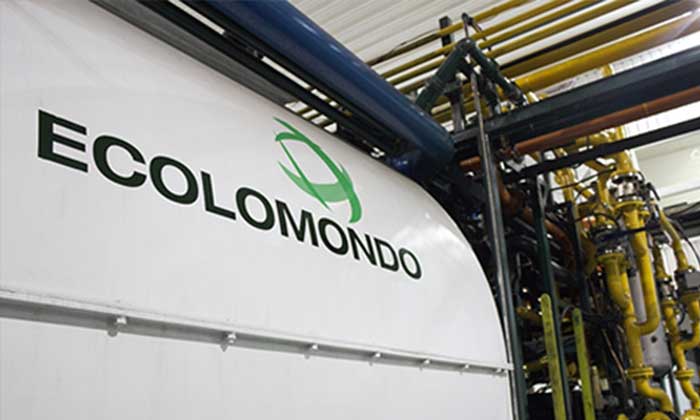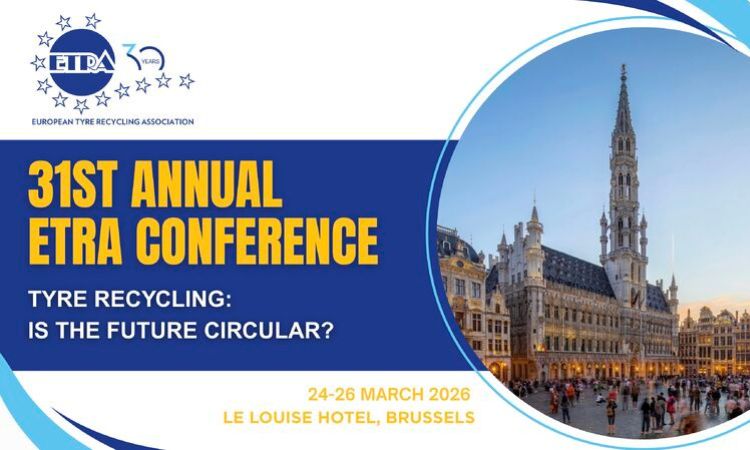Weibold Academy: EU RED III finally entered into force
Weibold Academy article series discusses periodically the practical developments and scientific research findings in the end-of-life tire (ELT) recycling and pyrolysis industry.
These articles are reviews by Claus Lamer – the senior pyrolysis consultant at Weibold. One of the goals of the review is to give entrepreneurs in this industry, project initiators, investors and the public, a better insight into a rapidly growing circular economy. At the same time, this article series should also be a stimulus for discussion.
For the sake of completeness, we would like to emphasize that these articles are no legal advice from Weibold or the author. For legally binding statements, please refer to the responsible authorities and specialist lawyers.
Introduction
On July 14, 2021, the European Commission unveiled the 'fit for 55' package to align with the EU's target of a 55% reduction in greenhouse gas emissions by 2030, part of the broader European Green Deal aiming for climate neutrality by 2050. The package revises the Renewable Energy Directive (RED II), increasing the target for renewable energy consumption from 32% to 40%, later raised to 45% under the REPowerEU plan. Additional targets are proposed for sectors like transport, buildings, industry, and heating, advancing the EU's transition to a greener future.
In the European Parliament, the file was referred to the Committee on Industry, Research and Energy (ITRE), with the Committee on the Environment, Public Health and Food Safety as an associated committee under Rule 57. The trilogue negotiations were concluded on 30 March 2023 with an agreement raising the share of renewables to 42.5 % by 2030. The revised directive (RED III) was published in the Official Journal on 31 October and entered into force on 20 November 2023.
History
Directive 2009/28/EC, commonly known as the Renewable Energy Directive (RED I), was implemented to aid the European Union in achieving its target of 20% renewable energy usage by 2020, part of the broader 2020 climate and energy package. RED I established binding minimum national targets for Member States, ranging from 10% in Malta to 49% in Sweden, ensuring collective sufficiency for the EU's overall target. It also mandated a sub-target of a 10% renewable energy share in each Member State's transport sector by 2020, a goal generally unmet. RED I introduced initiatives to facilitate Renewable Energy Sources (RES) promotion, including cross-border mechanisms like statistical transfers, joint projects, and support schemes. Additionally, it outlined detailed sustainability criteria and calculation methods for biofuels. The directive mandated reporting and monitoring, requiring Member States to develop national renewable energy action plans, while the Commission prepared biennial progress reports on renewable energy.
Directive (EU) 2018/2001, also known as RED II, represents a comprehensive revision of RED I to align with the 2030 climate and energy framework, featuring a 32% EU renewable energy target by 2030. Unlike its predecessor, RED II doesn't impose new binding targets on individual Member States; however, the existing 2020 targets serve as mandatory baseline levels for renewable energy shares. RED II emphasizes an integrated approach to monitoring, reporting, and enhancing EU and national climate and energy policies, as outlined in Regulation (EU) 2018/1999 on the governance of the energy union.
To bolster renewable energy support, RED II introduces measures such as cross-border schemes and expedited permitting processes for new renewable energy installations. It establishes a 14% sub-target for renewable energy in the transport sector, alongside additional targets promoting advanced biofuels and phasing out support for environmentally unsustainable biofuels like palm oil imports. Stricter sustainability and greenhouse gas emissions-saving criteria for biofuels are delineated, varying by sector. RED II also includes indicative targets to elevate renewable energy shares in heating and cooling systems, while legally defining renewable self-consumers and renewable energy communities as beneficiaries of support.
The Commission's 2020 renewable energy progress report, mandated by RED I, assessed the EU's efficacy in meeting renewable energy targets at both EU and Member State levels. In 2018, the EU achieved an average renewable energy share of 18% (18.9% for EU-27), surpassing the indicative trajectory for that period (16%) and indicating progress towards the 2020 goals. However, while the Renewable Energy Sources (RES) shares for electricity and heating exceeded expectations, transport lagged, with only two Member States (Finland and Sweden) exceeding the 10% target. Bioenergy remained the primary source of renewable energy in the EU, predominantly sourced from forestry, prompting sustainability concerns. Eurostat data for 2020 showed a 22.1% RES share in final energy consumption, comfortably surpassing the target. Nevertheless, further efforts are required to fulfill Member States' National Energy and Climate Plans (NECPs), collectively aiming for a 33.1% to 33.7% Renewable Energy Sources (RES) share by 2030.
The European Green Deal, driven by the EU's commitment to the Paris Agreement, aims to achieve climate neutrality by 2050. To elevate climate ambition, the Commission proposed a new target of 55% greenhouse gas (GHG) emissions reduction by 2030, surpassing the previous target of 40%. This target was later adopted by the Council and Parliament during negotiations on the European Climate Law in July 2021. The impact assessment underlying the 2030 climate target plan indicates that achieving the 55% GHG target necessitates a 38% to 40% renewable energy share in final energy consumption by 2030. Consequently, revisions to RED II and related climate and energy legislation were deemed essential, as the existing framework was designed to achieve a minimum 32% renewable energy share.
Intensive preparations for RED III
In July 2021, the European Commission released an extensive impact assessment (IA) report, totalling approximately 400 pages, to accompany its legislative proposal aimed at revising RED II. The IA meticulously evaluated eight primary policy options for aligning RED II with the EU's heightened climate target. Ultimately, it endorsed a multifaceted approach, encompassing:
- Setting a 40% renewable energy target by 2030 at the EU level, with indicative national contributions.
- Amplifying renewable energy ambition in the heating and cooling, as well as transport sectors, through elevated sub-targets.
- Introducing new measures to enhance energy system integration, particularly through sectoral coupling.
- Establishing comprehensive terminology and certification procedures for renewable fuels, traceable via a unified Union database.
- Promoting renewable fuels of non-biological origin (RFNBOs).
- Expanding agricultural biomass no-go areas to include forest biomass.
- Extending greenhouse gas (GHG) and sustainability criteria for biofuels to cover all existing RES installations (whereas in RED II, these criteria applied solely to new installations).
- Fostering greater cross-border cooperation, initially via pilot projects, with a focus on joint offshore energy development.
- Implementing various measures to encourage renewable energy uptake in the industrial sector.
The Commission submitted its initial draft IA to the Regulatory Scrutiny Board (RSB) on March 10, 2021, receiving a preliminary negative opinion on April 19, 2021, along with recommendations for enhancement. A revised draft was submitted on April 28, 2021, and received a positive opinion with reservations from the RSB on May 28, 2021. The final IA adopted by the Commission aimed to address the RSB's reservations.
In preparation for the legislative proposal, the Commission conducted a series of consultations with stakeholders and the general public. This involved publishing an inception impact assessment (IIA) for feedback between August 3 and September 21, 2020, garnering 374 responses from 21 Member States and 7 non-EU countries. The majority of contributions supported the climate ambitions of the European Green Deal and advocated for revising RED II with more ambitious sub-targets for transport, heating, and cooling. Some stakeholders expressed concerns about the early revision of RED II and its potential impact on regulatory stability and investor certainty.
The European Commission conducted a broad public consultation from November 17, 2020, to February 9, 2021, utilizing a detailed questionnaire covering various aspects of revising RED II. The consultation received an extensive response of 39,046 replies, primarily dominated by a coordinated environmental campaign opposing the use of forest biomass for renewable energy production. A vast majority of respondents (98%) were private citizens, with only a small fraction (2%) representing organizations, expressing differing views on biomass, and generally supporting more ambitious targets, especially in the transport sector.
The European Parliament's EPRS (European Parliamentary Research Service) conducted an implementation appraisal of RED II in March 2021, evaluating progress in meeting goals set out in RED I and implementing RED II, while also summarizing key views from the Parliament, other EU bodies, and stakeholders. In November 2021, EPRS published an initial appraisal of the Commission's impact assessment.
RED III revised many provisions of RED II
The Commission's legislative proposal for revising RED II entailed numerous amendments aimed at aligning the directive with the EU's heightened climate ambitions. The primary legal basis for the revised RED II remains Article 194(2) of the Treaty on the Functioning of the European Union (TFEU), dedicated to energy policies. Additionally, Article 114 (internal market) is added as a legal basis due to amendments in Directive 98/70/EC on fuel quality.
Key changes proposed by the Commission include:
- Modification of Article 1 to incorporate new definitions of renewable energy sources (RES) technologies.
- Amendment of Article 3 to establish a new EU target of a minimum 40% share of energy from RES in final consumption by 2030.
- Revision of Article 7 to account for renewable fuels of non-biological origin (RFNBOs) in the sector where they are consumed.
- Introduction of an obligation on Member States to within three years under Article 9.
- Establishment of a new article (Article 15a) setting an indicative EU target of a 49% RES share in the heating and cooling of buildings by 2030.
- Introduction of a new article (Article 22a) setting an indicative target of increasing RES use in the industry by +1.1% per annum.
- Transformation of the indicative target in Article 23 for RES use in heating and cooling into a binding baseline target.
- Introduction of a new article (Article 25) setting new sub-targets for advanced biofuels and RFNBOs in the transport sector.
- Introduction of a new article (Article 29a) setting GHG emissions saving criteria for RFNBOs and recycled carbon fuels.
- Expansion of the EU database under a new article (Article 31a) to cover liquid and gaseous renewable fuels and recycled carbon fuels.
Mixed reactions from stakeholders
The Commission's 'fit for 55' package has garnered mixed reactions. Environmental groups criticize the 40% renewable energy target as insufficient for limiting global temperature rises. They advocate for a higher target of at least 50% along with stricter criteria for bioenergy. Industry responses, particularly from renewable energy producers, are more positive, welcoming the certainty provided by the 40% target. However, they also stress the need for higher targets, with some suggesting 45%. There's a divide regarding forest biomass, with environmental groups opposing continued support while industry groups see it as important for renewable energy. The heating oil industry supports the reform goals but calls for an innovation-friendly approach adaptable to future technological advancements.
Finally at the finish line
The legislative process for the revision of the Renewable Energy Directive (RED II) involved various stages and negotiations between the European Parliament, the Council of the EU, and other relevant committees. Initially, the file was referred to the European Parliament's Committee on Industry, Research and Energy (ITRE). The Committee on the Environment, Public Health and Food Safety (ENVI) also contributed, along with several supporting committees. The ITRE committee adopted its report on 13 July 2022, supporting a binding 45% EU target for renewables by 2030 and proposing ambitious targets for various sectors, including industry, heating and cooling, and transport.
However, the Council of the EU adopted a different approach, supporting a binding RES target of 40% by 2030, with flexibility for Member States in the transport sector. Trilogue negotiations concluded on 30 March 2023, resulting in a provisional agreement between the co-legislators. The agreed-upon targets raised the share of renewable energy in EU final energy consumption to 42.5% by 2030, with the possibility of reaching 45%. Sub-targets were set for different sectors, including transport, industry, buildings, heating and cooling. Notably, the agreement included provisions for faster permit-granting procedures for renewable energy projects.
Parliament adopted the agreement in plenary on 12 September 2023, followed by the Council's adoption on 9 October 2023. The final act was signed by the Presidents of the Parliament and the Council on 18 October 2023, and the revised directive was published in the EU Official Journal on 31 October 2023, entering into force on 20 November 2023.
Conclusion
The revision of the Renewable Energy Directive (RED II) under the 'fit for 55' package has marked a significant milestone in the European Union's efforts to combat climate change and transition towards a greener future. The package, aimed at aligning with the EU's ambitious climate targets, has undergone an intensive legislative process involving thorough assessments, consultations, and negotiations among various stakeholders and EU institutions.
The legislative journey for RED III involved extensive deliberations, culminating in a provisional agreement between the European Parliament and the Council of the EU. This agreement raised the share of renewable energy in EU final energy consumption to 42.5% by 2030, with the possibility of reaching 45%. Sub-targets were set for various sectors, accompanied by provisions for faster permit-granting procedures for renewable energy projects.
Ultimately, the adoption of the revised directive signifies a concerted effort by the EU to prioritize renewable energy and advance its climate agenda. It reflects a commitment to sustainable development, energy security, and reducing greenhouse gas emissions, contributing to the overarching goal of achieving climate neutrality by 2050. As the revised directive comes into force, it sets the stage for accelerated action and innovation in the renewable energy sector, driving the EU closer to its climate objectives.
RED III also strengthens the ELT pyrolysis industry, which promotes the biogenic fraction of end-of-life tires (ELTs) in compliance with the sustainability criteria set out in Art. 29 (2) to (7) and (10) as well as the greenhouse gas saving thresholds set out in Art. 25 (2) of the Renewable Energy Directive.
Sources:
European Parliament (Legislative Train Schedule)
European Parliament (Think Tank Briefing 2023-12-04)
ISCC EU material list (2024-02-29)
ISCC EU 202-5 Waste and Residue (2024-01-01)
Weibold Academy (July 2023)
Weibold is an international consulting company specializing exclusively in end-of-life tire recycling and pyrolysis. Since 1999, we have helped companies grow and build profitable businesses.









